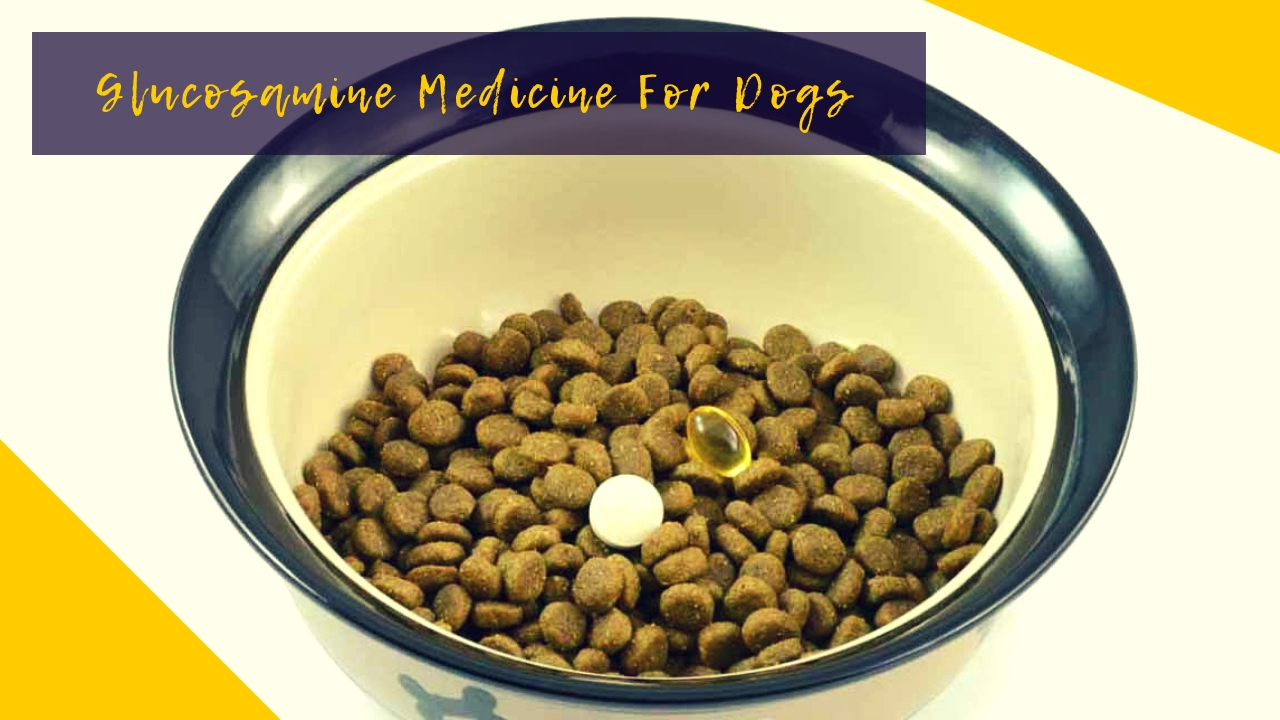For canines, a dietary supplement called glucosamine is usually recommended by veterinary doctors as an alternative for the treatment of inflamed joints and joint pain.
It is also recommended when dogs cannot withstand the adverse effects of add-on therapies or Non-Steroidal Anti-Inflammatory Drug (NSAID). Though this compound has been proven to have a very mild adverse effect profile, clinicians still find its usage and benefits quite questionable.
This is as a result of the fact that there is a plethora of formulation, composition, regimen, and amount of active ingredients in the products launched by different manufacturers. Notwithstanding, many veterinarians swear by this nutrient supplement. Wondering if glucosamine is the next best thing for your dog? Let’s take a look at the scope.
Glucosamine
Predominantly found in the joints, bone marrow, and the hard tissues of mammals is a naturally occurring compound called glucosamine. Glucosamine is one of the most common monosaccharides in the world. In supplemental forms, glucosamine is produced from crustaceans like shellfish.
It is also extracted from the fermentation of grains like wheat. Glucosamine is neither a mineral nor a vitamin but it is one of the most renowned dietary supplements used for alleviating problems associated with joints like osteoarthritis. There is evidence that proves just how effectual glucosamine is.
Side Effects of Glucosamine
As living organisms grow older, the cartilagein the body becomes weaker and less flexible. This is where the prescription of glucosamine comes in. The importance of glucosamine cannot be overemphasized.
In supplemental forms, glucosamine is mostly orally ingested. The compound plays an important role in the build-up of cartilage and the treatment of diseases like arthritis and osteoarthritis. Cartilage is a tough, flexible, and rubbery tissue which pads the ends of bones at the point where they connect at a joint. Research has proven that the main component that helps glucosamine do the main work is sulfur.
In addition to the above benefits of the compound, it also helps to provide non-stop relief of symptoms for about half a quarter a year, even when treatment is discontinued.
Arthritis in Dogs
Osteoarthritis in dogs is very real and quite heartbreaking. At one time or the other in our lives as dog owners, we have had to deal with the guilt that gnawed at us while we watched our lovely, aging dogs go through a life-limiting and painful condition and feel like we have been spread thin on options on how to help out.
We are usually plagued with questions such as: what can I do to make my best friend stronger and healthier? How can I nip this joint pain problem in the bud once and for all?
Canine lovers would give an arm and leg to have their four-legged cur jump and run around the house or park forever. Unfortunately, age kicks in and our mongrels become less active than they were when they were just puppies. One of the major ailments that affect our older hounds is arthritis and a worsening of joint health.

Arthritis is simply the inflammation of the joints. Research has proven that this degenerative disease affects about 20% of dogs that are over one year of age. The inflammation is usually caused by infections like tick-borne diseases, metabolic issues or even trauma. Arthritis can be worsened by genetic makeup, injuries, cancer or even immune diseases.
However, as a pet parent, it is important to know that the main cause of arthritis in dogs stems from three main problems including:
Dogs of different breeds and ages can be affected by arthritis but it is worthy of note that some factors put your canines at risk. What are they, you may ask?
These are a few of the factors that predispose hounds to the inflammation:
Sometimes, as pet owners, we might not even know when our dog is suffering from the disease. In dogs, the disease usually occurs in the knees, shoulders, hips,and elbows.
They occur in various forms including:
Arthritis causes the synovial fluid in the joints to lose its ability to lubricate, causing difficulty in the movement of bones and subsequent discomfort. An uncomfortable hound cannot move. If you are a dog owner whose canine is showing some strange signs of discomfort, you might want to zero on the fact that your dog is suffering from arthritis if it presents any of the symptoms related to the inflammation.
Symptoms of Arthritis in Canines
Check for any of these symptoms and start making plans to visit a doctor if you notice any of the following:
The symptoms worsen as the disease progresses. The disease cannot be cured; however, the pain and discomfort can be alleviated and the symptoms managed.
Management
Without sugarcoating things, arthritis goes unnoticed by pet parents and even veterinarians, especially at the earliest stages. If you are a dog owner, do not just beat yourself up yet for ignoring your pet. Sometimes, dogs tend to hide any form of discomfort or stiffness until the inflammation has become really severe.
Arthritis is a disease that slowly progresses as it causes debilitation in different breeds of canines. The pain and reduction in mobility it causes usually has a negative impact on the affected dog. This negative impact can be in form of reduced quality of life, heightened level of discomfort, the decline in daily functioning, activities, behavior, and a sharp decline in an owner-pet relationship.
For our active canines, the test of health is being able to move freely without hassles or stress. Perfect mobility is facilitated by healthy cartilages that cushion the bones of your dog that connect at a joint. The cartilage is the “perfect shock absorber” when bones are in motion. Cartilage absorbs the force of concussion generated when your dog walks.
Unlike other parts of the body that gets a frequent supply of blood, cartilage depends on the joint to actively pump nutrient-rich fluid to the tissues surrounding it. As your dog ages, this shock absorber becomes drier and thinner making it less effective to cushion the bones that meet at the joint. Young dogs are not usually saddled with this challenge because their cartilage turns constantly undergoes renewal.
As soon as a dog develops this disease, it is best to explore different treatment options. NSAID feel heaven sent at first but their adverse effects—which includes gastrointestinal ulceration sometimes—outweighs their benefits. Other ways of managing arthritis in canines include administering nutraceuticals like glucosamine, milk protein, pentosane polysulphate, and chondroitin.
The most common types of nutrient supplements used for treating dogs with this inflammation are chondroitin sulfate and glucosamine hydrochloride (HCl). The latter has been proven to be very effective in recent years and is fast eliminating the need for NSAIDs which can have deleterious effects on canines.

FAQs
What Is Glucosamine?
Does Glucosamine Work?
How Do I Administer Glucosamine to My Pet?
How Can I Choose the Best Glucosamine Supplement for My Pet?
Are There Natural Sources of Glucosamine?
Vegan Options for My Dog?
Does Glucosamine Have any Adverse or Negative Effects?
How to Track Effectiveness of Glucosamine?
When Shouldn’t You Give Glucosamine to Your Pet?
Conclusion
Now that you have been well informed about this nutrient, it is your choice to weigh its pros and cons. Also, talk to your veterinarian so that you can be intimated on the risk factors of the inflammation and the potential rewards of administering glucosamine supplements. Whatever healthcare regimen you plan to adopt for your canines, it is important to ensure that they feel like they are in PAW-radise, all through the turbulent times!






